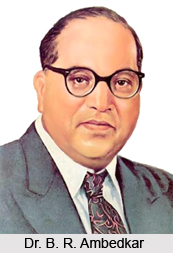 Bahujan Samaj Party is considered as one of the foremost national political parties in India with socialist leanings. At the time of its formation, the party was established with the aim of representing Bahujans (BC, SC, ST & Minorities), who are believed by few to be at the bottom of the Indian caste system. The ideology of Bahujan Samaj Party, `Dalit Socialism`, is enthused from the philosophy of Dr. B. R. Ambedkar (father of the contitution). Keeping these ideologies in mind the high-profile charismatic leader Kanshi Ram established the Bahujan Samaj Party In 1984.
Bahujan Samaj Party is considered as one of the foremost national political parties in India with socialist leanings. At the time of its formation, the party was established with the aim of representing Bahujans (BC, SC, ST & Minorities), who are believed by few to be at the bottom of the Indian caste system. The ideology of Bahujan Samaj Party, `Dalit Socialism`, is enthused from the philosophy of Dr. B. R. Ambedkar (father of the contitution). Keeping these ideologies in mind the high-profile charismatic leader Kanshi Ram established the Bahujan Samaj Party In 1984.
Elephant is the official party symbol of the BSP. It is mainly based in the Indian state of Uttar Pradesh. The party has formed state government in its native state a number of times. BSP had 14 members out of 545 members in the 13th Lok Sabha (1999-2004), wherein the membership raised to 19 in the 14th Lok Sabha. This is testimony of the surging popularity of the party. After Kansi Ram, the post of the president is presently adorned by Mayawati Kumari. Mayawati is associated with the party for a long period of time.
BSP established itself the single majority party from the year 1991, after the state assembly election held on 11th May 2007. It took 15 years for BSP to win a clean-sweep in India`s most populated state, Uttar Pradesh. Bahujan Samaj Party became the single largest party with 206 seats out of 403 seats in the state assembly. Mayawati, President of the party, became the new Chief Minister of UP for the 4th term. Along with 50 ministers (cabinet and state rank) she took oath as the chief minister at Rajbhawan in the state capital Lucknow. The party also has a student wing namely, BSSF-Bahujan Samaj Students Forum. Bahujan Samaj Party also have their own publication called- Adil Jafri and Mayayug. The post of general secretary is held by party member Satish Chandra Mishra.




















